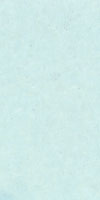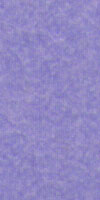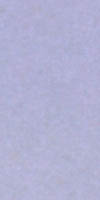
Cone 6 Iron Reds | Matte Bases | Glossy Bases | Honey Transparents | Floating Blues | PV Clay - Cone 06 Raku | LowFire Clear
Matte Base Gerstley Borate Cone 6 Glazes
These pages were a study of how we substituted Boraq 1, Boraq 2 and Boraq 3 into common recipes.
Boraq was developed by Plainsman Clays as a substitute for Gerstley Borate (under code number L3127E).
The development effort took place during the early 2000s, the initial period when the demise of Gerstley Borate appeared imminent.
Other companies, including Laguna Clays, introduced similar products at the time.
Later Laguna Clays began processing a last stockpile of the material they found at the mine and interest in substitutes waned.
In 2023 the cycle appears set to repeat so these pages are pertinent again.
Gerstley Borate was used to create
very nice magnesia matte glazes (using dolomite and talc). This might seem
strange considering that GB is so fluid and naturally tends to form runny glossy
glazes. But moderate to large amounts of magnesia change that.
It acts as a filler and stabilizer to counteract the runny melt (not as a flux).
However, with more magnesia comes less resistance to leaching and cutlery marking).
An interesting side effect of this mechanism is that calculated thermal
expansion values are misleading. Likely the normally low expansion
influences of MgO depend on them being active in the glass chemistry, that is not happening here.
Good Surface But a Color Matching Problem
This glaze, G2826G, takes the magnesia matte concept close to the limit (it uses both
dolomite and talc to supply MgO). This is very matte.
|
These cone 5 porcelain tiles show an example of the G2826G glaze,
it has a pleasant yet very matte surface. It has a fairly low B2O3 content and contains
less than 25% Gerstley Borate.
Using the Boraq 1 produces a similar color, but the extra B2O3 tends to cause
blistering. Boraq 2 duplicates the satin surface very well, but
the color is way off! This is likely because MgO and cobalt (the colorant used
is this sample) react to produce purple! The MgO tied up in the chemistry
of hectorite does not appear to react in the Boraq 1 whereas the MgO from the added
dolomite in Boraq 2 does.
But notice the Boraq 3 specimen. It only contains added whiting. Why does a
little extra calcia turn the color like this? If MgO and Cobalt give purple then
why isn't the original glaze purple since it contains a very large amount of MgO
from talc?
|
| 2826G |
Formula and Mole% with GB |
Boraq1 |
Boraq2 |
Boraq3 |
| CaO |
0.38* |
10.18 |
9.08 |
10.16 |
10.62 |
| Li2O |
0.03* |
0.88 |
0.88 |
0.88 |
0.88 |
| MgO |
0.47* |
12.46 |
11.95 |
12.39 |
11.84 |
| K2O |
0.02* |
0.53 |
0.58 |
0.57 |
0.57 |
| Na2O |
0.10* |
2.56 |
2.31 |
2.21 |
2.21 |
| TiO2 |
0.00
|
0.11 |
0.11 |
0.12 |
0.12 |
| Al2O3 |
0.18 |
4.76 |
4.96 |
4.90 |
4.91 |
| B2O3 |
0.23 |
6.04 |
7.17 |
6.40 |
6.38 |
| SiO2 |
2.34 |
62.42 |
62.87 |
62.31 |
62.39 |
We have removed a couple of oxides showing trace amounts to reduce clutter. Also note that
the last digit of precision is not significant.
Click here to learn about Mole% calculations. |

With GB

With
Boraq 1
|

With Boraq 2

With Boraq 3
|
Compare Chemistrty of Boraq 3 Version
2826G1
Lavendar Satin Cone 6 with GB |
2826G2
Lavendar Satin Cone 6 with Boraq 3 |
|
|

|
|

|
Possible Solutions
- Reduce the Boraq 1 content
- Apply the Boraq 1 version thinner and remove a small amount of cobalt. The
GB version of the glaze does not build up a layer as fast and it is
difficult to get a test application of similar thickness on the ware.
- Use cobalt oxide instead of carbonate to reduce bubbles and defects.
- Since the recipe contains talc, we can remove some of it.
Oatmeal Glaze
The magnesia in this recipe, G2826V, is much lower than the one above, but there is
still enough to form a very silky and pleasant surface (yet it is hard and does
not cutlery mark). 10% zircon opacifier and 5% rutile are also added to a
standard base of nepheline syenite, GB, silica and kaolin. You can control the
amount of color by either applying to a dark body (thin sections of the glaze
are darker) or by adding a colorant to the glaze (i.e. a small amount of iron).
This glaze fires identical to the GB version using either Boraq 2 or 3.
2826v
Oatmeal with Gerstley Borate |
2826v1
Oatmeal with Boraq 2 |
|
|

|
|
|
This matte base is suitable for a wide variety of colors. We got identical
results using Boraq 2 and GB. Since this glaze is quite stable it acts as a good
base on which to apply overlayers of fluid darker colored glossy glazes, these
will "feather into" the matte surface.
We have seen variations on this that employ calcium borate frits. However
none have had the same pleasant silky matte surface this one has.
Maybe the interplay between the contrasting melting behaviors of colemanite (cadycal),
ulexite and feldspar particles in GB coupled with the neighboring influences of
refractory magnesia particles creates a surface with more variation than
possible using homogeneous frits.
By Tony Hansen
Follow me on
                        |  |
















